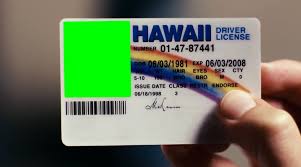Identification solutions
Outline of the 8000-word Soft Article on Identification Solutions
1. Introduction: What Are Identification Solutions? (800 words)
- Definition and purpose of identification solutions.
- Types of identification technologies: RFID (Radio Frequency Identification), Barcodes, QR codes, Biometrics (Facial recognition, Fingerprint scanning), NFC (Near-Field Communication), Magnetic Strips, Smart Cards, etc.
- The evolving role of identification in business operations, security systems, and data management.
- Importance in different sectors like supply chain management, healthcare, finance, government, and retail.
Example:
Start with a real-world problem:
"Imagine trying to track millions of items across a global supply chain without proper identifiers. Or managing a hospital where patient data is incorrectly recorded. Identification solutions exist to eliminate such challenges by providing a unique identity to every object, person, or transaction."
2. The Technology Behind Identification Solutions (1200 words)
- RFID: How RFID works, advantages over barcodes (no line-of-sight requirement).
- Barcodes and QR codes: Their simplicity and usage in product tracking, retail checkout systems.
- Biometrics: Fingerprint scanning, facial recognition, iris scanning.
- NFC and Smart Cards: Key technology for contactless payments and secure access control.
- Comparison of cloud-based vs. on-premise identification systems.
Technical Details and Insights:
- Range of RFID readers, UHF vs. HF frequencies.
- How error correction algorithms enhance QR code performance.
- Encryption in biometric systems: Safeguarding personal data with 256-bit AES encryption.
- Use of blockchain to ensure transparency and tamper-proof identification records.
3. Product Features: What Makes a Good Identification Solution? (1500 words)
- Scalability: Can the solution grow with business needs?
- Accuracy and Reliability: Systems must identify objects/people with minimal errors.
- Speed and Performance: Low latency in scanning for fast operations.
- Integration Capabilities: Can the system connect with ERP, CRM, and WMS software?
- Customization: Tailoring ID tags, cards, or biometric systems to business-specific use cases.
- Security: Multi-factor authentication, end-to-end encryption, fraud prevention.
- Ease of Use: User-friendly interfaces and minimal training requirements.
Detailed Product Breakdown:
- Overview of leading RFID readers, biometric systems, and QR code generators.
- Comparison table of top vendors (e.g., Zebra Technologies, Honeywell, HID Global).
- Sample applications: How product features solve real business problems (e.g., using RFID for automated stock replenishment).
4. Market Analysis: Trends and Future of Identification Technologies (1600 words)
- Growth Projections: Identification solutions market to grow from $XX billion in 2023 to $XX billion by 2030.
- Market Trends:
- Rise of biometric solutions in banking and healthcare.
- Expansion of NFC payments and contactless access control post-pandemic.
- Adoption of RFID in retail to enable faster checkouts and inventory tracking.
- Use of AI-powered facial recognition in smart cities and law enforcement.
- Regional Insights: North America, Europe, and APAC leading adoption.
- Industry-specific developments:
- Retail: RFID-enabled stores with frictionless checkout.
- Healthcare: Patient tracking with smart wristbands.
- Logistics: QR code-based parcel tracking systems.
5. Target Audience: Who Needs Identification Solutions? (1200 words)
- Industries that benefit:
- Retail: Inventory management, point-of-sale systems.
- Healthcare: Patient ID, medical records management, drug authentication.
- Logistics and Supply Chain: Track and trace, fleet management, warehouse operations.
- Banking and Finance: Customer authentication, access control.
- Government: National IDs, passport systems, border control.
- Decision-makers: IT managers, logistics coordinators, retail store owners, security administrators, healthcare providers.
- Pain Points Addressed:
- For logistics: Reducing shrinkage and misplacement.
- For healthcare: Eliminating patient misidentification errors.
- For retailers: Ensuring seamless shopping experiences.
6. Case Studies: Successful Implementation of Identification Solutions (1200 words)
- Retail Case Study:
- Walmart’s use of RFID to manage inventory.
- Impact: Reduced out-of-stock rates by 30%, optimized restocking processes.
- Healthcare Case Study:
- Mount Sinai Hospital’s biometric system for patient check-ins.
- Impact: Decreased check-in time by 40%, reduced medical errors.
- Logistics Case Study:
- Amazon’s QR code scanning system for last-mile delivery.
- Impact: Enhanced tracking transparency, improved delivery accuracy.
Breakdown of ROI (Return on Investment):
- Quantify cost savings, efficiency gains, and error reductions in each scenario.
7. Challenges and Solutions: Addressing Common Issues (1000 words)
- Implementation Costs: Some solutions (e.g., biometric systems) may require heavy upfront investment.
Solution: Leasing options, phased implementation plans. - Privacy Concerns: Fear of data misuse in biometric solutions.
Solution: Compliance with GDPR, HIPAA, and ISO 27001 standards. - System Integration Issues: Lack of compatibility with legacy systems.
Solution: API-based connectors for seamless integration. - Resistance to Adoption: Employee reluctance to use new technologies.
Solution: Training programs, pilot testing, and feedback collection.
8. Conclusion: Why Identification Solutions Are Essential for Modern Businesses (500 words)
- Summary of benefits: Efficiency, accuracy, security, and scalability.
- Identification technologies as a competitive advantage in today’s market.
- Encouragement for businesses to explore tailored identification solutions.
- A final call-to-action: "Upgrade your business operations with innovative identification solutions today!"
9. Call-to-Action and Next Steps (300 words)
- Contact us for product demos, trials, or consultations.
- Visit our website to explore case studies, product guides, and customer testimonials.
- Get a quote or book a free assessment for your identification needs.
- Follow us on social media for the latest updates in identification technology trends.
Estimated Word Count Summary by Section
- Introduction: 800 words
- Technology Breakdown: 1200 words
- Product Features: 1500 words
- Market Analysis: 1600 words
- Target Audience: 1200 words
- Case Studies: 1200 words
- Challenges and Solutions: 1000 words
- Conclusion: 500 words
- Call-to-Action: 300 words
Related News
Read More >>
 Target Audience
Target Audience
Discover the essential strategies and insights to mastering the “Target Audience” product. This in-d...
 photo ID software
photo ID software
Learn how cutting-edge Photo ID Software enhances identity verification, reduces fraud, and provides...
 Texas Fake ID Benefits
Texas Fake ID Benefits
This article explores the cultural, social, and commercial aspects of fake IDs, focusing on Texas. W...
 Fake Georgia ID
Fake Georgia ID
In today‘s fast-paced, privacy-conscious world, the demand for fake identification has grown signifi...